
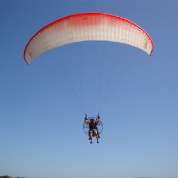

A breeze is a mild local wind caused by heat and the uneven cooling of adjacent surfaces, under the influence of solar radiation (during or day) and terrestrial radiation (during the night), producing a pressure gradient (ratio decreasing or increasing the pressure per unit distance in a certain time period) between the ridge and the valley or in a coastal area,between the aqueous and terrestrial surface.
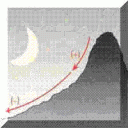 mountain breeze – cool and moderate wind blowing mountain ridge night to the valley (katabatic ) because the night, the ridges they cool faster, forming around high pressures and valleys, with a slower cooling, are formed by low pressure.
mountain breeze – cool and moderate wind blowing mountain ridge night to the valley (katabatic ) because the night, the ridges they cool faster, forming around high pressures and valleys, with a slower cooling, are formed by low pressure.
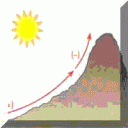 Brisa do vale – blows in the morning of the valley to the mountain (anabático) because mountain ridges heat first to the valley, forming ridges in the low pressure.
Brisa do vale – blows in the morning of the valley to the mountain (anabático) because mountain ridges heat first to the valley, forming ridges in the low pressure.
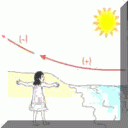 sea breeze – Wind above que de dia, from sea to land. During or day, the land warms faster, originating on land low pressures and high pressures at sea.
sea breeze – Wind above que de dia, from sea to land. During or day, the land warms faster, originating on land low pressures and high pressures at sea.
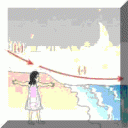 land breeze – Wind above que de noite, from land to sea. During the night the land cools faster, here forming high pressures, while the water cools more slowly, creating low pressure in the sea.
land breeze – Wind above que de noite, from land to sea. During the night the land cools faster, here forming high pressures, while the water cools more slowly, creating low pressure in the sea.
How varies the Wind strength?
The wind speed depends on the barometric gradient, the frictional force on the ground and air density.
The higher the atmospheric pressure difference, the higher the wind speed
The greater the friction force caused by the relief, buildings, vegetation, etc, the lower the wind speed
The air is denser than the surface level. Like this, the wind speed is higher in the highlands.